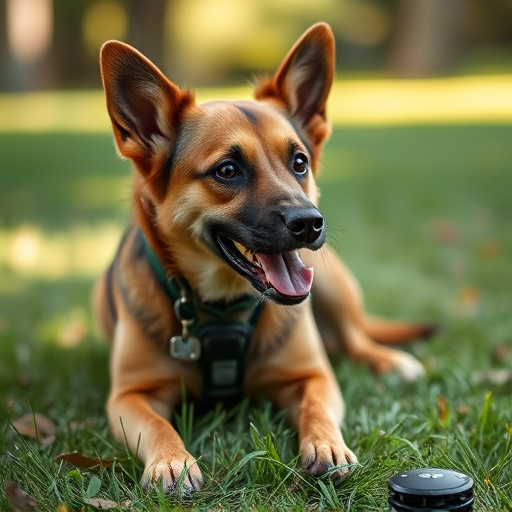Dog repellent devices, like sonic systems, rely on compliance testing for effectiveness and safety. These tests measure sound pressure levels, frequency ranges, and directionality to ensure they meet industry standards, target only intended species, and operate within safe limits. Reputable manufacturers undergo rigorous testing protocols to provide consumers with reliable, long-lasting solutions for dog control that adhere to regional regulations.
“Explore the revolutionary world of animal control with our in-depth guide on Sonic Repellent Systems designed for dog management. This article delves into innovative solutions for addressing canine behavior issues, focusing on understanding sonic repellents’ efficacy. We examine rigorous compliance testing protocols ensuring these devices meet safety standards, specifically for Dog Repellent Devices. Additionally, we navigate legal considerations and market regulations, providing a comprehensive overview for consumers and professionals alike.”
- Understanding Sonic Repellents for Dogs
- Compliance Testing Protocols for Animal Control Devices
- Evaluating Safety and Efficacy of Dog Repellent Devices
- Legal Considerations and Market Regulations
Understanding Sonic Repellents for Dogs
Sonic repellents for dogs are innovative devices designed to keep canines away from specific areas or objects without causing them harm. These devices emit high-frequency sound waves that are unpleasant to dogs but generally inaudible to humans. Understanding how these repellents work is crucial when considering their effectiveness and safety.
Compliance testing is an integral part of ensuring a dog repellent device’s reliability and adherence to safety standards. Such tests verify the device’s ability to emit the correct frequency range, ensuring it is effective yet safe for both dogs and humans. By undergoing rigorous compliance testing, manufacturers can guarantee that their products meet industry regulations, providing peace of mind for consumers who wish to protect their property using these advanced dog repellent systems.
Compliance Testing Protocols for Animal Control Devices
Animal control devices, such as sonic repellent systems designed for dogs, undergo rigorous compliance testing protocols to ensure their safety and effectiveness. These tests are essential in verifying that the devices meet specific standards and regulations, guaranteeing they operate within safe sound pressure levels and target only the intended species without causing harm to others.
Compliance testing involves a series of controlled experiments to assess the device’s performance under various conditions. This includes measurements of sound output levels, frequency ranges, and directionality to confirm that they are within safe limits for animals and humans alike. Additionally, these tests evaluate the device’s selectivity, ensuring it responds only to specific animal species and not to other sounds in the environment, thereby minimizing unintended impacts on non-target creatures.
Evaluating Safety and Efficacy of Dog Repellent Devices
When evaluating any dog repellent device, it’s paramount to consider both safety and efficacy. These devices are designed to deter dogs from specific areas, often using ultrasonic sounds or other technologies, but their effectiveness can vary widely. Reputable manufacturers undergo rigorous Dog Repellent Device Compliance Testing to ensure their products meet safety standards and effectively address the issue without causing harm to animals.
This testing includes assessing the device’s sound output levels, ensuring they fall within safe decibel ranges for animal exposure, and evaluating its impact on non-target species. Additionally, performance tests measure how well the device repels dogs over time and in different environmental conditions, providing consumers with a reliable gauge of its practical application and longevity.
Legal Considerations and Market Regulations
When implementing an animal control sonic repellent system, especially those designed for dog deterrence, it’s crucial to consider legal and market regulations. Each region has its own set of guidelines and standards for such devices, ensuring consumer safety and environmental protection. For instance, any commercial use of Dog Repellent Devices must adhere to stringent testing protocols, including compliance with relevant safety and efficacy standards. This often involves rigorous lab tests and field trials to demonstrate the device’s effectiveness without causing harm to humans or other non-target species.
Regulatory bodies play a vital role in overseeing the market for these products, ensuring they meet specific criteria before reaching consumers. This includes assessing the noise levels, frequency ranges, and overall impact of sonic repellent systems on both animals and people. By adhering to these regulations, manufacturers not only ensure their products’ legality but also contribute to the responsible development and application of animal control technologies.
The implementation of animal control sonic repellent systems offers a promising, non-lethal approach to managing canine behavior. Understanding the science behind sonic repellents, adhering to strict compliance testing protocols, and prioritizing safety and efficacy are paramount. Legal considerations and market regulations vary globally, demanding careful navigation. By combining rigorous research, responsible innovation, and sensible regulation, dog repellent devices can play a significant role in promoting humane and effective animal control while respecting both human needs and animal welfare.
